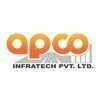Billing Engineer
100+ Billing Engineer Interview Questions and Answers

Asked in Shapoorji Pallonji Group

Q. What is Escalation and what is the significance of this? What is the formula to determine Escalation.
Escalation is the increase in cost or price of goods or services over time due to various factors.
Escalation is significant in construction projects where the cost of materials and labor can increase over time.
It is important to factor in escalation when creating project budgets and timelines.
The formula for escalation is: Escalated Cost = Base Cost x (1 + Escalation Rate)^Number of Years
For example, if the base cost of a project is $100,000 and the escalation rate is 3% per ...read more

Asked in Shapoorji Pallonji Group

Q. What is the difference between penalty and liquidated damages?
Penalty is a punishment for breach of contract while liquidity damages compensate for financial loss due to breach.
Penalty is a fixed amount agreed upon in the contract as a punishment for breach of contract.
Liquidity damages compensate for the actual financial loss suffered due to breach of contract.
Penalty is usually higher than the actual loss suffered while liquidity damages are calculated based on the actual loss.
Penalty is meant to deter breach of contract while liquidi...read more
Billing Engineer Interview Questions and Answers for Freshers

Asked in Shapoorji Pallonji Group

Q. How many types of contract and their importance? What are the advantages and drawbacks of each.
There are various types of contracts in construction projects. Each has its own advantages and drawbacks.
Types of contracts include lump sum, cost-plus, time and material, and unit price contracts.
Lump sum contracts provide a fixed price for the entire project, but can lead to disputes over changes.
Cost-plus contracts reimburse the contractor for all costs plus a fee, but can lead to inflated costs.
Time and material contracts pay for labor and materials based on actual usage,...read more
Asked in Unique Concrete Technologies

Q. Which IS code do we prefer for measurement, and how many parts are there?
IS code 1200 is preferred for measurement, and it has 3 parts.
IS code 1200 is used for measurement of buildings and civil engineering works.
It has 3 parts: Part 1 deals with Earthwork, Part 2 deals with Concrete work, and Part 3 deals with Reinforcement work.
The code provides guidelines for measurement, billing, and payment of construction works.

Asked in Shapoorji Pallonji Group

Q. What is your understanding of the term 'Basic Price Variation'?
Basic Price variation refers to the change in the cost of materials or labor used in a project.
Basic Price variation is a common clause in construction contracts.
It allows for adjustments to the contract price based on changes in the cost of materials or labor.
The variation can be positive or negative, depending on whether the cost has increased or decreased.
The variation is usually calculated using an agreed-upon formula or index.
For example, if the cost of steel increases d...read more

Asked in Shapoorji Pallonji Group

Q. What is the wastage limit of reinforcement steel as per CPWD and market practice?
The wastage limit of reinforcement steel varies as per CPWD and market practice.
CPWD allows a wastage limit of 2% for reinforcement steel.
However, market practice may vary and some contractors may allow up to 3% wastage.
Wastage can occur due to cutting, bending, and handling of steel bars.
Proper planning and management can help minimize wastage and save costs.
Billing Engineer Jobs




Asked in Shapoorji Pallonji Group

Q. Is basic price variation beneficial for a contract? If yes, explain how.
Yes, basic price variation is beneficial for a contract.
Basic price variation allows for adjustments to be made to the contract price based on changes in market conditions or material costs.
This helps to ensure that the contractor is not unfairly burdened with unexpected costs and can maintain profitability.
It also provides a level of transparency and accountability in the contract, as both parties are aware of the potential for price adjustments.
For example, if the cost of s...read more
Asked in Tricon Infra Buildtech pvt.Ltd

Q. What are the plaster deductions as per the Indian Standard (IS) code?
Plaster deductions as per IS code include deductions for openings, thickness variations, etc.
Plaster deductions are specified in IS 1200-Part 8: 1974 (Reaffirmed 2003)
Deductions are made for openings such as doors, windows, etc.
Thickness variations in plaster are also considered for deductions
The deductions are calculated based on the area of the openings and the thickness variations
Share interview questions and help millions of jobseekers 🌟

Asked in Unique Concrete Technologies

Q. According to IS 1200 part-1, what is the offset for any foundation?
Offset for any foundation as per IS 1200 part-1.
As per IS 1200 part-1, the offset for any foundation should be 75mm.
Offset is the distance between the center of the column and the center of the foundation.
This offset is necessary to ensure that the load from the column is transferred to the foundation evenly.
For example, if the center of the column is 1000mm from the edge of the foundation, the center of the foundation should be 1075mm from the same edge.

Asked in Apco Infratech

Q. Rates of sub-contractors . Billing process. Reconciliation means and how it is done. Rate Analysis. Key points of your last project. Type of structure that you had seen in your last company. And their detailed...
read moreThe interview covered topics such as rates of sub-contractors, billing process, reconciliation, rate analysis, previous project experience, and types of structures encountered.
Explained the process of obtaining rates from sub-contractors and how they are incorporated into the billing process
Discussed the importance of reconciliation in ensuring accurate billing and payment
Described the process of rate analysis and how it is used to determine project costs
Shared key points and...read more
Asked in Reliance Electric Works

Q. How many types of billing are there in building construction?
There are mainly two types of billing in building construction: interim billing and final billing.
Interim billing is done during the construction process and is based on the percentage of work completed.
Final billing is done after the completion of the project and includes all the expenses incurred during the construction process.
Interim billing can be further classified into monthly billing, milestone billing, and stage billing.
Monthly billing is done on a monthly basis, mil...read more

Asked in Ahluwalia Contracts India

Q. What are the labor charges for main items like concrete, shuttering, and reinforcement steel?
The labor charges for main items like concrete, shuttering, and reinforcement steel vary depending on factors such as location, project size, and labor rates.
The labor charges for concrete are typically calculated based on the volume of concrete required and the prevailing labor rates.
The labor charges for shuttering (formwork) are usually determined based on the area of formwork required and the complexity of the design.
The labor charges for reinforcement steel installation ...read more

Q. 1-The formula of hook? In steel what FE denotes for? And concrete is good for tensile strength or compressive strength?
The hook formula, FE in steel denotes 'iron', and concrete is good for compressive strength.
The hook formula is used to calculate the number of ways to arrange objects in a circle.
FE in steel stands for 'iron', which is the main component of steel.
Concrete is good for compressive strength, but not as good for tensile strength.
Reinforcing steel bars are often used in concrete to improve its tensile strength.

Asked in PSP Inc

Q. What is the mode of measurement for plaster work?
The mode of measurement for plaster work is in square meters.
Plaster work is typically measured in square meters
The area of the surface to be plastered is calculated to determine the quantity of materials needed
Measurements are taken by multiplying the length and height of the surface being plastered
For example, if a wall is 3 meters long and 2 meters high, the total area to be plastered would be 6 square meters

Asked in Shapoorji Pallonji Group

Q. Rollin margin in rainforcement steel
Rolling margin is the extra length of reinforcement steel provided to compensate for any cutting or bending during construction.
Rolling margin is usually 5-10% of the total length of reinforcement steel required for a project.
It is important to factor in rolling margin during the estimation and procurement of reinforcement steel.
For example, if a beam requires 10 meters of reinforcement steel, a rolling margin of 0.5-1 meter should be added to the total length.
This ensures th...read more
Asked in Reliance Electric Works

Q. Which grade of cement is normally used in building construction?
The grade of cement used in building construction depends on the type of structure and the environmental conditions.
The most commonly used grades of cement in building construction are OPC 33, OPC 43, and OPC 53.
OPC 33 is used for plastering and finishing works.
OPC 43 is used for general construction purposes.
OPC 53 is used for high-strength concrete and precast concrete products.
Other types of cement, such as Portland Pozzolana Cement (PPC) and Sulphate Resistant Cement (SRC...read more

Asked in Confident Group

Q. How many blocks are in one cubic meter?
The number of blocks in one m3 depends on the size of the blocks.
The size of the blocks can vary depending on the material used.
For example, if the blocks are 20cm x 20cm x 20cm, then there would be 125 blocks in one m3.
However, if the blocks are 10cm x 10cm x 10cm, then there would be 1000 blocks in one m3.
Asked in Unique Concrete Technologies

Q. You have any experience in shore piling, skin concrete, waterproofing of Basement etc.
Yes, I have experience in shore piling, skin concrete, and waterproofing of basement.
I have worked on several projects involving shore piling, including the installation of sheet piles and soldier piles.
I have experience in the application of skin concrete to provide a durable and aesthetically pleasing finish to concrete surfaces.
I have also worked on waterproofing basement structures using various methods such as membrane systems and injection grouting.

Asked in TCE

Q. What is the difference between an account engineer and a billing engineer?
An account engineer manages financial accounts while a billing engineer handles billing and invoicing.
Account engineers manage financial accounts and ensure that all financial transactions are recorded accurately.
Billing engineers handle billing and invoicing processes, ensuring that customers are billed correctly and payments are received on time.
While both roles involve financial management, account engineers focus on the overall financial health of the company while billin...read more

Asked in Ahluwalia Contracts India

Q. What is the allowable wastage percentage for major items?
The allowable wastage percentage of a major item varies depending on the industry and project specifications.
The allowable wastage percentage is typically specified in the project contract or specifications.
It is important to minimize wastage to control costs and ensure efficient resource utilization.
The allowable wastage percentage may differ for different major items, such as concrete, steel, or electrical materials.
For example, in construction projects, the allowable wasta...read more

Asked in Aarvee Associates

Q. What is LD in billing, What is JMR, Mandatory document required for bill to be raised etc
LD in billing stands for Liquidated Damages, JMR stands for Joint Measurement Report, Mandatory documents include BOQ, drawings, work order, etc.
LD in billing refers to Liquidated Damages, which are penalties imposed on contractors for delays in project completion.
JMR stands for Joint Measurement Report, which is a document used to record measurements taken jointly by the client and contractor to verify quantities of work done.
Mandatory documents required for bill to be raise...read more

Asked in Buildmet

Q. What you have done in planning and billing department.Have you know prw billing and client billing
I have experience in planning and billing department. Familiar with PRW billing and client billing.
Managed project budgets and tracked expenses
Prepared invoices and ensured timely payment from clients
Used PRW billing software to generate bills and reports
Collaborated with project managers and clients to resolve billing discrepancies
Maintained accurate records of billing and financial transactions


Q. What are the basic calculation requirements for billing and quantity surveying?
Basic calculations for billing and quantity survey require accurate measurements, unit rates, quantities, and labor costs.
Accurate measurements of dimensions and quantities are essential
Unit rates for materials and labor must be determined
Labor costs need to be calculated based on the quantity of work done
Total cost is calculated by multiplying the quantity by the unit rate

Asked in NCCCL

Q. Can you perform a rate analysis of one of your Bill of Quantities (BOQ) items? If so, please provide the details verbally.
Rate analysis involves evaluating the costs associated with a specific BOQ item to ensure accurate project budgeting.
Material Costs: Calculate the cost of materials required for the item, e.g., concrete, steel, etc.
Labor Costs: Estimate the labor required to complete the item, including hourly rates and total hours needed.
Overhead and Profit: Include overhead costs (e.g., utilities, administrative expenses) and desired profit margin.
Example: For a concrete slab, total costs m...read more

Asked in TCE

Q. What is Pile Foundation?
Pile foundation is a type of deep foundation used to transfer heavy loads of a structure to a deeper level of soil or rock.
Pile foundation is used when the soil at the surface is not strong enough to support the weight of the structure.
It consists of long, slender columns made of concrete, steel or timber that are driven into the ground.
The piles are driven deep enough to reach a layer of soil or rock that is strong enough to support the weight of the structure.
Examples of st...read more
Asked in Keystone Infrabuild

Q. What is Escalation and what are the escalation components?
Escalation in billing refers to the increase in costs due to various factors. Components include labor, materials, equipment, overhead, and profit.
Escalation refers to the increase in costs of a project over time.
Components of escalation include labor costs, material costs, equipment costs, overhead costs, and profit margins.
Labor costs can escalate due to increases in wages or labor shortages.
Material costs can escalate due to fluctuations in market prices or shortages.
Equip...read more

Asked in Anonymous Content

Q. What are the basic documents required for billing for a project?
The basic documents required for billing for a project include invoices, purchase orders, work orders, timesheets, and contracts.
Invoices: These are documents that detail the products or services provided and the amount owed by the client.
Purchase Orders: These documents are used to request and authorize the purchase of materials or services.
Work Orders: Work orders outline the specific tasks or activities to be completed and the associated costs.
Timesheets: These documents t...read more

Asked in Som Projects (S.P.L)

Q. What happens if the quantity executed exceeds the BOQ quantity?
The excess quantity executed beyond the BOQ quantity needs to be documented and approved by the client before billing.
Document the excess quantity separately from the original BOQ quantity
Seek approval from the client for the excess quantity before including it in the billing
Adjust the billing amount accordingly based on the approved excess quantity
Maintain clear communication with the client regarding the excess quantity and billing process
Asked in Keystone Infrabuild

Q. What are the deduction criteria for shuttering?
The deduction criteria for shuttering include damaged or lost materials, excess materials, and improper installation.
Deductions are made for damaged or lost shuttering materials.
Excess materials beyond the required quantity may also lead to deductions.
Improper installation of shuttering can result in deductions as well.

Asked in Ranjit Buildcon

Q. What is the appropriate size for each column in a given context?
Column size in billing engineering depends on data type, usage, and performance considerations for optimal database design.
Data Type Consideration: Choose sizes based on the data type; for example, VARCHAR for variable-length strings, INT for integers.
Usage Frequency: Columns frequently accessed should be optimized for size to improve performance; e.g., using SMALLINT instead of INT if values are small.
Normalization: Ensure columns are sized appropriately to avoid redundancy;...read more
Interview Questions of Similar Designations
Interview Experiences of Popular Companies






Calculate your in-hand salary
Confused about how your in-hand salary is calculated? Enter your annual salary (CTC) and get your in-hand salary


Reviews
Interviews
Salaries
Users










